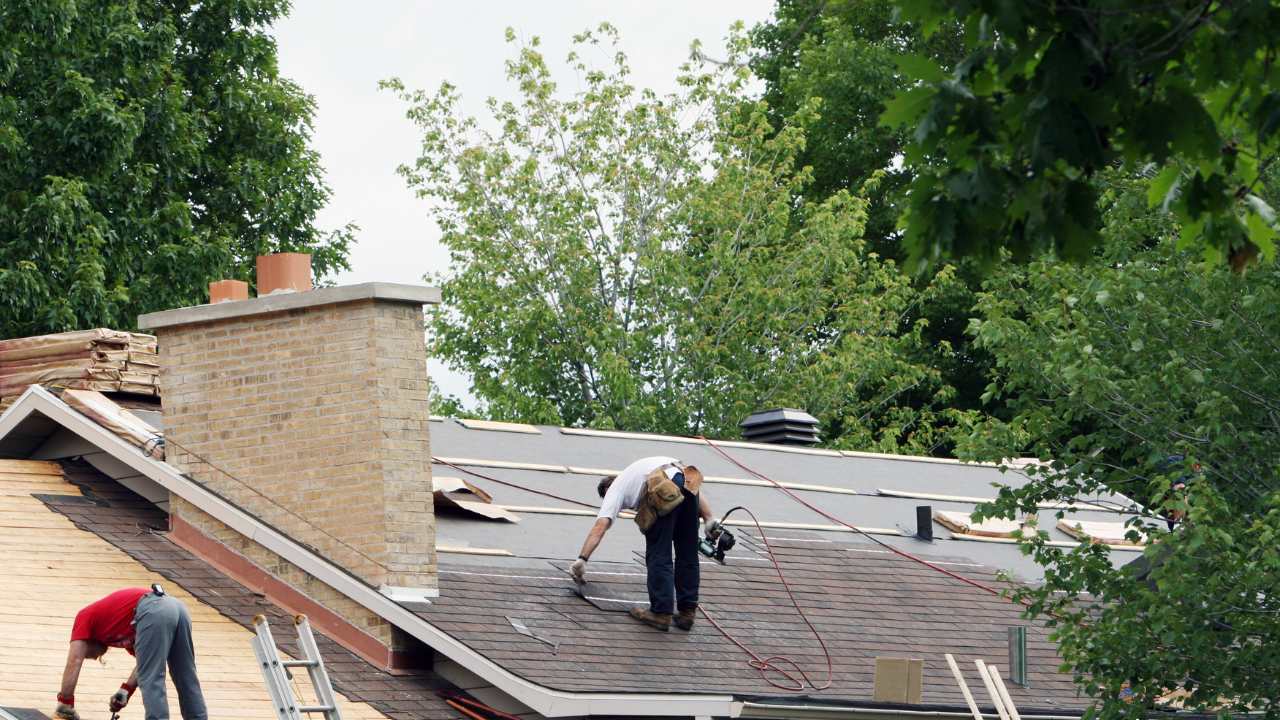Hailstorms can be one of nature’s most destructive forces, causing significant damage to homes, vehicles, and property. The roof is one of the most vulnerable parts of a house during hailstorms. The size of hailstones plays a crucial role in determining the extent of damage a roof may sustain.
In this comprehensive blog, we will delve into the various hailstone sizes that can damage a roof and equip homeowners with valuable tips to spot potential damage from the ground.
Understanding the Impact of Hailstone Size on Roofs
Pea-sized Hail (1/4 inch in diameter):
Pea-sized Hail is relatively small and rarely poses a threat to well-maintained roofs. Roofs made of durable materials like metal, slate, or tile are usually safe from damage at this site. However, older or less robust roofing materials, such as asphalt shingles, might suffer minimal harm, such as minor granule loss.
Marble-Sized Hail (1/2 inch in diameter):
Hailstones of this size can start to cause minor damage to some roofing materials, even those considered durable. Asphalt shingles may experience granule loss, and wood or composite shingles might show signs of splintering. Inspecting your roof after such a hailstorm is crucial to ensure there are no hidden damages.
Dime-Sized Hail (3/4 inch in diameter):
Hailstones the size of a dime can cause more noticeable damage, especially to roofs with asphalt shingles. Impacts can lead to cracks, dents, or punctures on shingles, exposing the roof’s underlayment to potential water leaks.
Quarter-Sized Hail (1 inch in diameter):
At this size, hailstones can cause substantial damage to most roofing materials, particularly asphalt shingles. The impact can crack or split the shingles, compromising protection against water infiltration. Metal roofs may also experience dents and visible damage.
Golf Ball-Sized Hail (1 3/4 inches in diameter):
Golf ball-sized hail poses a significant threat to most roofing materials. The impact can cause severe damage, including splitting, cracking, or puncturing shingles. Metal roofs may develop dents and potentially experience structural issues.
Tennis Ball-Sized Hail (2 1/2 inches in diameter):
Hailstones of this size can cause severe damage to roofs, leading to the need for extensive repairs or even roof replacement. Roofing materials like asphalt shingles, wood shingles, and metal roofs are susceptible to severe impacts at this site.
Baseball-Sized Hail (2 3/4 inches in diameter):
Baseball-sized hailstones can wreak havoc on roofs, causing significant structural damage. Almost all roofing materials are vulnerable to catastrophic damage at this size, and immediate action is necessary to address any roof-related issues.
Softball-Sized Hail (4 inches or more in diameter):
Softball-sized Hail is extremely dangerous and can cause severe and widespread damage to roofs, leading to complete roof failure. No roofing material is safe from destruction at this size, and homeowners should prioritize safety and seek shelter during such storms.
Spotting Hail Damage from the Ground
Identifying hail damage on your roof from the ground is essential for prompt action and minimizing potential long-term issues. Here are some valuable tips to help you spot hail damage without climbing up onto the roof:
Inspect the Ground and Surrounding Areas:
After a hailstorm, examine the ground around your home for fallen hailstones. The size of the hailstones on the ground can give you an idea of the potential impact they may have had on your roof.
Check for Visible Signs of Damage:
Stand back and visually inspect your roof from the ground. Look for noticeable signs of damage, such as missing, cracked, or displaced shingles. For metal roofs, check for dents or visible deformations.
Examine Gutters and Downspouts:
Check your gutters and downspouts for an accumulation of granules. Asphalt shingles may shed granules when impacted by Hail, indicating possible roof damage.
Inspect Vents and Flashing:
Scan the roof for damage to vents, chimneys, skylights, or flashing. These areas are often more susceptible to hail impact and may show signs of denting or cracking.
Look for Water Leaks:
After a hailstorm, inspect your attic and ceilings for any signs of water leaks. Water stains or dampness can indicate roof damage and the need for immediate repairs.
Consult a Professional Roofer:
If you suspect hail damage but cannot spot it from the ground, it’s best to call a professional roofer to conduct a thorough inspection. Roofers have the expertise and equipment to identify hidden damage.
Conclusion
Understanding the size of hailstones that can damage a roof is essential for homeowners to protect their property from the devastating effects of hailstorms. Regularly inspecting your roof for hail damage after a storm can help you detect issues early and prevent further deterioration.
Remember, if you suspect any damage but cannot assess it from the ground, it’s best to consult a qualified roofing professional for a thorough inspection and appropriate repairs. By staying vigilant and taking timely action, you can safeguard your roof and home from the destructive forces of hailstorms.
Take a look at some of these great resources:
- How To Know When It’s Time For A New Roof
- What Is Metal Roofing, And What Are Its Benefits?
- What Are The Benefits Of Choosing James Hardie Siding?
- What Are The Benefits Of Having New Siding Installed On Your Home?
- Should You Insulate Your Attic Yourself Or Hire A Professional?
Also, here are some resources to help you select a reputable contractor:
- How to Hire a Roofing Contractor: the Ultimate Checklist
- How to Avoid Being Scammed by a Roofing Contractor
GET A FREE ROOF HEALTH REPORT ON YOUR ROOF
Finally, we thought you’d like to know about our Shingles Styles & Colors page, where you can scroll down to our DESIGN Eye Q section. Here, you can upload a photo of your home and “try on” the different Owens Corning asphalt roofing shingle colors directly from our website to better understand how your color choice will affect the overall appearance of your home.
It takes a few minutes to upload your home picture and select a shingle color. You can even adjust the siding and trim color as well.
Let’s schedule a time for your Free Roof Inspection. Book Online Here!





